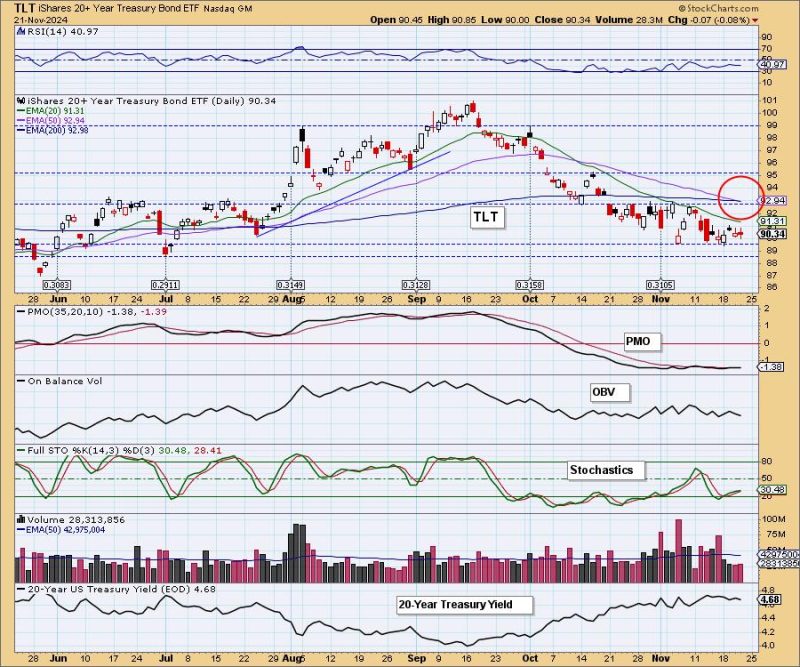In the world of finance, technical analysis plays a crucial role in predicting future price movements of assets such as stocks, bonds, and commodities. One of the widely used technical indicators is the death cross, which occurs when a shorter-term moving average crosses below a longer-term moving average. Recently, bonds have received a death cross sell signal, raising concerns among investors and traders alike.
The death cross sell signal on bonds indicates a potential downturn in bond prices, as the shorter-term moving average has fallen below the longer-term moving average. In a typical scenario, this signal is interpreted as a bearish sign, suggesting that the downward momentum may continue in the near future. Investors and analysts often use such signals to make informed decisions about whether to buy, sell, or hold their bond positions.
Historically, the death cross has been considered a reliable indicator of a bearish trend in the markets. When this signal occurs, it can trigger a wave of selling activity as investors rush to offload their bond holdings in anticipation of further price declines. This selling pressure can lead to increased volatility and downward pressure on bond prices.
However, it is essential to note that technical indicators like the death cross should not be used in isolation when making investment decisions. It is crucial to consider other factors such as economic indicators, market sentiment, and geopolitical events that can also influence bond prices.
In the current economic environment, where central banks are adjusting interest rates and governments are issuing bonds to finance their budgets, the bond market is particularly sensitive to changes in monetary policy and economic conditions. Investors need to keep a close eye on these developments to understand the potential impact on bond prices and yields.
While the death cross sell signal on bonds may raise concerns among investors, it is essential to approach such signals with caution and conduct thorough research before making any investment decisions. By combining technical analysis with fundamental research and market insights, investors can gain a more comprehensive understanding of the bond market and make informed choices that align with their investment goals and risk tolerance.
